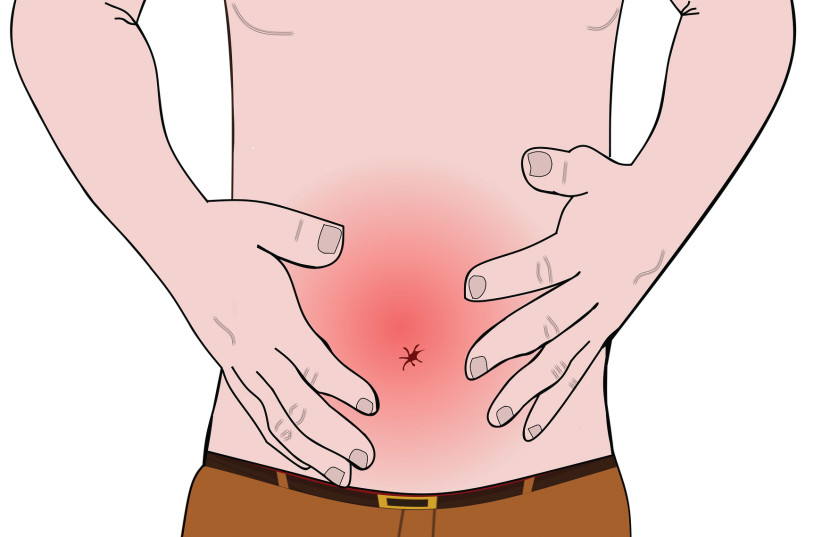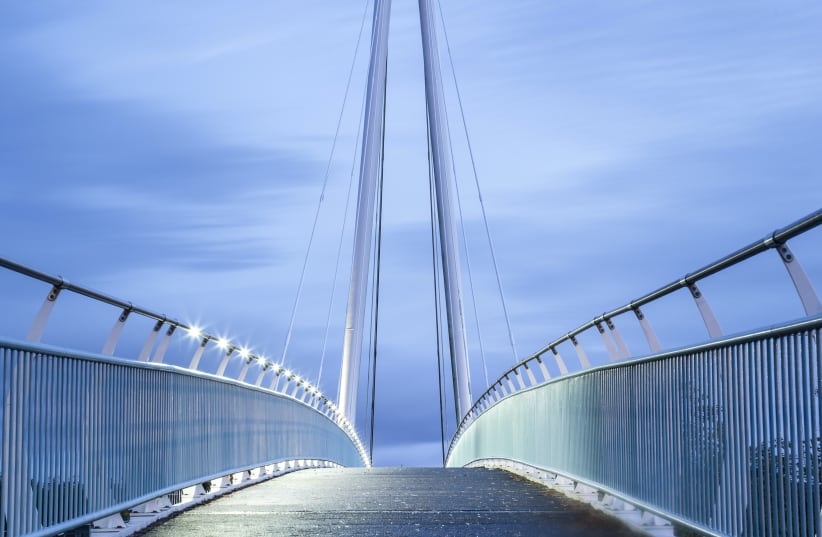At first, the haredi parents were hesitant.
Their daughters go to schools of girls only, and there would be boys at the meeting. Their sons go to yeshivot, and there will be girls in jeans. But then they overcame their reluctance to attend the gathering because they knew how their daughters and sons are suffering.
Like a growing number of children and teens, they have Crohn’s disease, or ulcerative colitis (inflammatory bowel disease, IBD). Some 30% of today’s patients are youngsters.
Chron's disease: Something no one is exempt from
No one knows why there is an increase in IBD Crohn’s in children these days, tells me Prof. Michael Wilschanski, director of the Pediatric Gastroenterology Unit at Hadassah-University Medical Center. He’s had patients as young as six months old. He adds a new patient to the roster of Crohn’s kids every week. There are theories but no proof of genetic, environmental and immunological origins.
Although Crohn’s disease is two to four times more prevalent among people of Ashkenazi ancestry, compared to those of non-Jewish European ancestry, to borrow Wilschanski’s words, “No one is exempt from this disease, in which the body turns on its own digestive system.”
“No one is exempt from this disease, in which the body turns on its own digestive system.”
Michael Wilschanski

Kids with Crohn’s suffer from abdominal pain, fatigue and, worst of all, severe diarrhea. Now there’s a word that’s unpleasant to write or read. Imagine what living with it is like for a child or teen. Medication, particularly the new biological medicines, help a lot, but there are side effects, and there is no cure.
The children and teens are often shorter and thinner than their peers. Athletics and sports are a particular challenge.
So Wilschanski and his team – led by Dr. Zev Davidovics, a pediatric gastroenterologist recruited from my home state of Connecticut, where the Connecticut Children’s Medical Center in Hartford has its own large IBD clinic – invited their patients and families for a get-together at Hadassah in Jerusalem’s Ein Kerem.
“They came from [places ranging from] Mea She’arim to Ramallah,” he said. The doctors would update everyone on new directions of treatment, but the most important part was the camaraderie that they hoped to create.
To help break down the barriers, Wilschanski invited a team of Playback Theatre actors. If you’ve ever taken part in Playback Theatre, created by Jonathan Fox in 1975, you know that the audience shares key terms, associations and stories from their own lives, and the actors immediately improvise a play with what they hear.
A translator made sure that the Arab families understood.
So the parents – bareheaded, wigs, hijabs – and patients shared the phrases that described their lives. The play, which had them all laughing hard, was about a boy on his school bus daring to go on the class trip. He feels humiliated, as he has to ask the teacher several times to stop the bus so he can use the bathroom. Somehow the actors made it funny. Wrote one of the patients, “We had such an amazing time. I needed that laugh so badly, and I don’t think I ever laughed like that about my Crohn’s.”
“The Playback was an icebreaker,” said Wilschanski. “The next thing we knew, the teens from all ethnicities were mingling around the food buffet and exchanging stories and life strategies for living with the disease.” They shared school experiences and how they coped with the outbreaks and medications.
Over a hundred persons – 70 families – took part in that evening and feasted on the kosher bagels, fish and salads. Eating healthy food is a strong suggestion.
“This was a relaxed evening with plenty of time to ask and answer questions. Representatives of the Israel Foundation for Crohn’s Disease and Ulcerative Colitis came, too,” Wilschanski said.
In the way of teens, phone numbers for texting and WhatsApp groups were exchanged. That can help with the isolation, the embarrassment and, yes, the bullying. Jews, Christians, Muslims spent an evening when they felt safe talking about their fears, shame and hope.
AS THE many thank-you notes Wilschanski received attest, this was a pleasant and pragmatic evening, but would we call it a bridge for peace?
My own experience is that when sides of the conflict get together just to discuss their differences, those differences are exacerbated.
My favorite example is a cosmetic session I was once invited to called “Let’s Make Up.” Jewish and Arab women were invited to a makeup lesson in the Mamilla Mall – no serious disease to discuss, just the universal desire by all to look a little better. The last participant to arrive was a woman from Ramallah who used the word “occupation” in every sentence. My hackles were raised immediately, and I considered leaving. Nonetheless, I volunteered to be the model for the lesson, and the cosmetician began showing how to cover my wrinkles. Let’s say that it was only a modest success. My potential antagonist was soon inviting me to come to the Palestinian Authority with her so I could get some serious anti-wrinkle treatment. “Botox is so much cheaper for us,” she said. I didn’t take her up on her offer, but I felt that moment was more authentic than a lot of the talk in conflict-resolution groups.
We’re entering a time when Jews are preparing for Passover, Christians are observing Lent, and Muslims are readying for Ramadan. In theory, this should be a time of joy and festivity for us all – not one in which we are on high alert.
At this time, we need all the bridges – large and small – that we can build.
So when the children and teens – as well as their parents, who are helping them to cope both with the diagnosis and the reality of an incurable (but not fatal, thank God) disease – find those who share their illness and maybe their genes, yes, I think it’s a bridge for peace.
When we see ourselves on the same side, with a common challenge, that common challenge builds ties that matter and last. The best proof is to be able to unite in a moment of shared laughter.
The writer is the Israel director of public relations at Hadassah, the Women’s Zionist Organization of America. Her latest book is A Daughter of Many Mothers.
